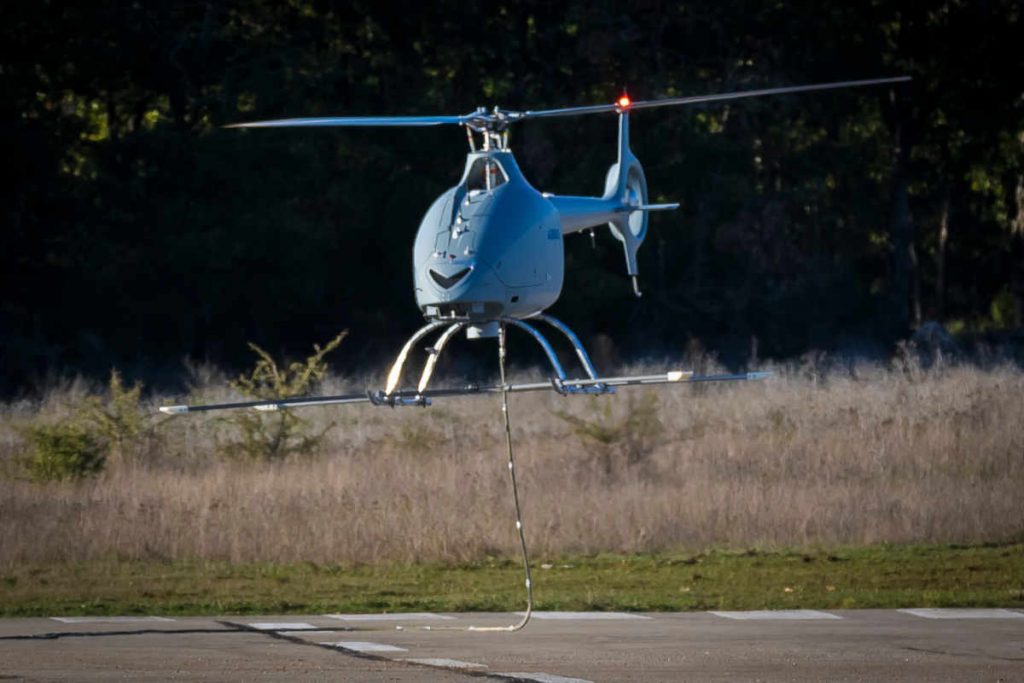
Features
Drones
VSR700 prototype first flight
November 12, 2019 By Helicopters Staff
 Derived from Guimbal’s Cabri G2, Airbus describes the VSR700 as a next-generation defence innovation for 21st century navies. (Photo: Eric-Raz / Airbus)
Derived from Guimbal’s Cabri G2, Airbus describes the VSR700 as a next-generation defence innovation for 21st century navies. (Photo: Eric-Raz / Airbus) The prototype of Airbus Helicopters’ VSR700 unmanned aerial system on November 8 performed its first flight at a drone test centre near Aix-en-Provence in the south of France. The VSR700 made several take-offs and landings with the longest flight lasting around 10 minutes.
During the testing, in accordance with the airworthiness authority that provided the flight clearance, the VSR700 was tethered with 30-metre cables to secure the flight test zone. Subsequent phases of the flight test program will now move towards free flight, as Airbus progressively opens the aircraft’s flight envelope.
“The VSR700 is a fully-fledged unmanned aerial system, capitalizing on Airbus Helicopters’ extensive experience of advanced autopilot systems and engineering expertise to provide modern militaries with new capabilities,” said Bruno Even, CEO, Airbus Helicopters. “This first flight of the VSR700 prototype is a major milestone for the program as we make progress on the operational demonstrator for the French Navy that will perform trials in 2021 in partnership with Naval Group.”
The VSR700, derived from Hélicoptères Guimbal’s Cabri G2, is an unmanned aerial system in the 500 to 1,000 kg maximum take-off weight range. Airbus explains it is capable of carrying multiple full-size naval sensors for extended periods and can operate in existing ships, alongside a helicopter, with a low logistical footprint.
Airbus describes the VSR700 prototype as a step change from the optionally piloted demonstrator that first flew in 2017. Compared to the demonstrator, which was based on a modified Cabri G2 equipped for autonomous flight, the VSR700 prototype has a specialized set of avionics and an advanced flight control system, a payload bay in place of the pilot station designed to manage mission equipment, as well as what Airbus describes as a sleeker, more aerodynamic shape to improve flight performance.